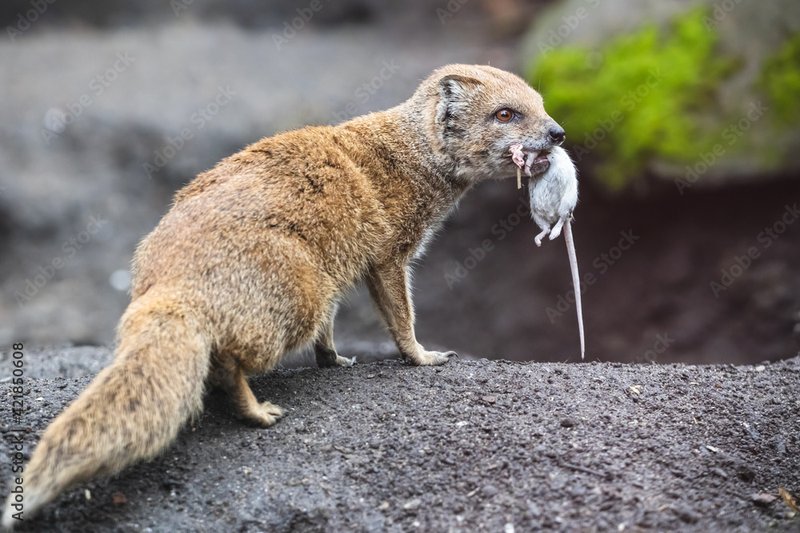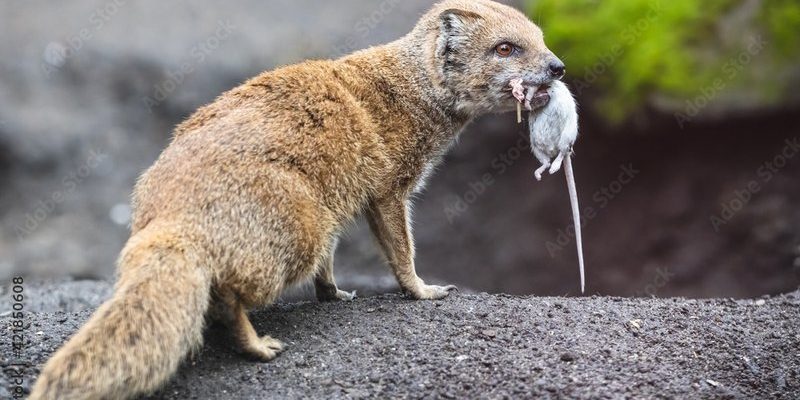
Understanding the diet and hunting strategies of the yellow mongoose can give us insight into their role in the ecosystem. Much like how we shop for groceries, these mongooses have their preferences and techniques when it comes to finding dinner. Let’s explore the different aspects of their feeding habits and behaviors in detail.
What Does a Yellow Mongoose Eat?
Yellow mongooses are opportunistic eaters, meaning they will take advantage of whatever food is available. Their diet primarily consists of:
- Insects: Beetles, crickets, and grasshoppers are popular choices.
- Small Vertebrates: They’ll snack on small rodents, birds, and even lizards.
- Fruits and Vegetables: Occasionally, they might munch on fruits when other food sources are scarce.
Here’s the thing: while these mongooses will eat just about anything, their preference leans heavily toward protein-rich options, like insects and small animals. This flexibility helps them survive in different environments, from savannas to shrublands.
When food is abundant, yellow mongooses can often be seen foraging in groups. They have a social structure that allows them to work together, which not only makes finding food easier but also keeps them safe from predators.
Hunting Techniques of the Yellow Mongoose
Now, let’s get into the nitty-gritty of how they hunt. The hunting strategy of a yellow mongoose is pretty impressive and includes several techniques:
- Stalking: They quietly sneak up on their prey.
- Ambush: They often hide and wait for the right moment to pounce.
- Teamwork: When hunting in groups, they can corner and trap their prey more effectively.
When stalking, a yellow mongoose will crouch low to the ground, carefully moving closer to its target. This method requires patience and keen eyesight, as they have to keep track of their prey while avoiding being noticed.
Sometimes, you might see them using the ambush technique. Picture a cat waiting in the grass before jumping out; it’s very similar. They’ll remain still until their prey gets close enough, then they’ll spring into action.
The Role of Social Structure in Hunting
Ah, the importance of teamwork! Yellow mongooses often hunt in small family groups, which can significantly increase their success rates. When they collaborate, they can cover more ground and keep a lookout for potential threats.
For example, one mongoose might act as a lookout while others forage. If one picks up on danger, it can warn the others with a specific call. It’s like having a buddy system but in the wild! This social bonding doesn’t just make hunting easier; it strengthens their family ties and increases the chances of survival.
The whole family hunts together not only for food but also to teach the younger mongooses essential survival skills. Watching how the adults capture prey gives the young ones valuable lessons.
Seasonal Diet Changes
Interestingly, the yellow mongoose’s diet isn’t set in stone. Depending on the season, they adapt their eating habits. For instance, during the rainy season, the availability of insects increases, leading to a diet heavily focused on these protein-packed snacks.
On the flip side, during the dry season, their food choices may shift toward small mammals or the occasional fruit. It’s as if they have a flexible menu! This adaptability is crucial for their survival, allowing them to thrive in a range of conditions.
You might wonder how these seasonal changes affect their hunting behavior. When certain prey becomes more available, their hunting strategy might shift too, focusing more on specific types of ambush or stalking methods suitable for catching that prey.
Environmental Impact on Their Diet
The habitat of the yellow mongoose plays a huge role in their diet. These creatures thrive in areas like grasslands, savannas, and bushy terrains. The type of ground cover can determine which prey is available.
For example, in a bushy area, their diet might consist more of small mammals, while in open savannas, insects could be more prevalent. Also, urbanization and environmental changes can affect food availability, pushing yellow mongooses to adapt quickly or even relocate.
With the ongoing changes to their habitats, it’s important to understand how these factors influence their hunting strategies and diet. If their primary food sources drop, they may need to explore new areas or change what they eat entirely. It’s like when you’re trying to find a good restaurant in a new place—you have to be flexible and open to trying new foods!
So, there you have it! The diet and hunting strategies of the yellow mongoose reveal so much about how these clever animals navigate their environments. Their ability to adapt and work together makes them fascinating to observe and study.
Whether they’re foraging alone or hunting in packs, these mongooses display a remarkable level of intelligence and resourcefulness. The next time you hear about yellow mongooses, remember: they’re not just cute little critters but also skilled hunters with a savvy approach to survival.
Understanding them helps us appreciate the delicate balance of nature and the intricate relationships these animals have with their environment. That’s a lesson we could all benefit from—being adaptable and resourceful can lead to success, no matter where we find ourselves!

